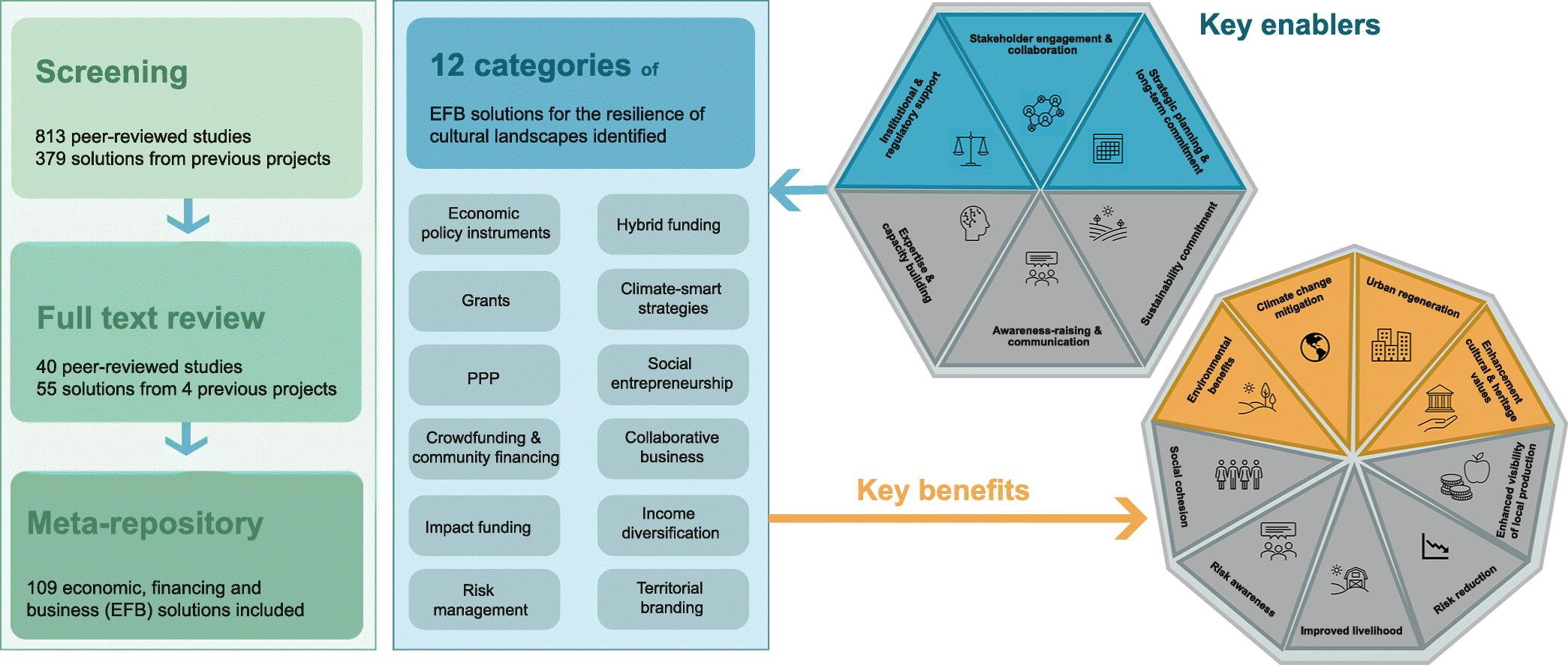
How do cultural landscapes adapt to the challenges posed by climate change? From the effectiveness of national grants in New Zealand and urban greening in Bratislava, Slovakia, to crowdfunding initiatives in British Columbia, Canada, new research, led by CMCC researcher Dana Salpina, explores financial strategies that ensure the sustainability of vital socio-ecological systems.
Cultural landscapes, shaped by the interaction between humans and nature, hold immense environmental and cultural value not only for the communities that interact and live in them but also for society as a whole. These dynamic systems — such as agricultural, forestry, and fishing landscapes — are under increasing threat from climate change, demanding innovative approaches that build resilience.
However, ensuring the climate resilience of cultural landscapes comes with significant costs, structural investments and innovative financial and business strategies. Financing their adaptation has long been a challenge due to the unique needs of these living systems compared to static heritage assets like monuments or archaeological sites.
New research identifies key enabling factors and benefits of investing in cultural landscape resilience, emphasizing how aligned sectoral policy objectives and mapping funding sources can enhance financial support.
“Cultural landscapes are not just historical artifacts; they are living systems that support communities and ecosystems,” says lead author of the study and CMCC researcher Salpina. “Their resilience requires holistic strategies that address both physical preservation and the continuity of underlying activities.”
The study identifies twelve innovative financing and business strategies that can help cultural landscapes adapt to climate change. These include grants, economic policy instruments, public-private partnerships (PPP), hybrid funding, crowdfunding, community financing, impact funding, risk management, income diversification, social entrepreneurship, collaborative business strategy, climate-smart business strategy, and territorial branding.
The research also highlights key enablers such as stakeholder engagement, regulatory support, and sustainability commitments. These findings are compiled in the open-access RescueME Meta-Repository, which will soon be available to stakeholders including policymakers, businesses, and cultural institutions.
“This research bridges the gap between finance, sustainability, and cultural heritage,” says Salpina. “By identifying effective financing solutions, we can help transform good ideas into real projects that benefit both the environment and the communities that depend on cultural landscapes.”
Unlike previous studies, that focus narrowly on built heritage conservation or restoration, this research takes a broader approach by addressing the financial needs of productive cultural landscapes. The study maps real-world economic strategies used globally to protect these landscapes and provides a structured framework for scaling up investments.
The research was led by CMCC as a part of the Horizon Europe-funded RescueME project, which aims to enhance resilience in European coastal cultural landscapes through data-driven and community-led approaches.
CMCC played a central role in the study by conducting a systematic review of literature and databases on financing strategies. CMCC also helped to develop the meta-repository and analyzed enabling factors for successful implementation in collaboration with the University of Bologna and Conexiones Improbables.
Preserving cultural landscapes is not just about protecting heritage; it’s about ensuring the resilience of communities and ecosystems in a changing world, and this study sets a new standard for integrating finance into climate resilience planning for cultural heritage.
For more information
Dana Salpina, Veronica Casartelli, Angelica Marengo, Jaroslav Mysiak, Financing strategies for the resilience of cultural landscapes. Lessons learned from a systematic literature and practice review, Cities, Volume 162, 2025, 105922, ISSN 0264-2751, https://doi.org/10.1016/j.cities.2025.105922



